The Spectacle of the Bullfight in Madrid, Spain
In each of the three bullfights I witnessed that day, the ending was the same. And it was... uncomfortable.
This ritualistic killing of a bull, however, is something more than a blood-sport. For the Spanish, it's Art, Life, and Tradition.
For more on this experience, Read Part I here: https://travelfeed.io/@braveboat/las-ventas-plaza-de-toros-bullring-of-espana
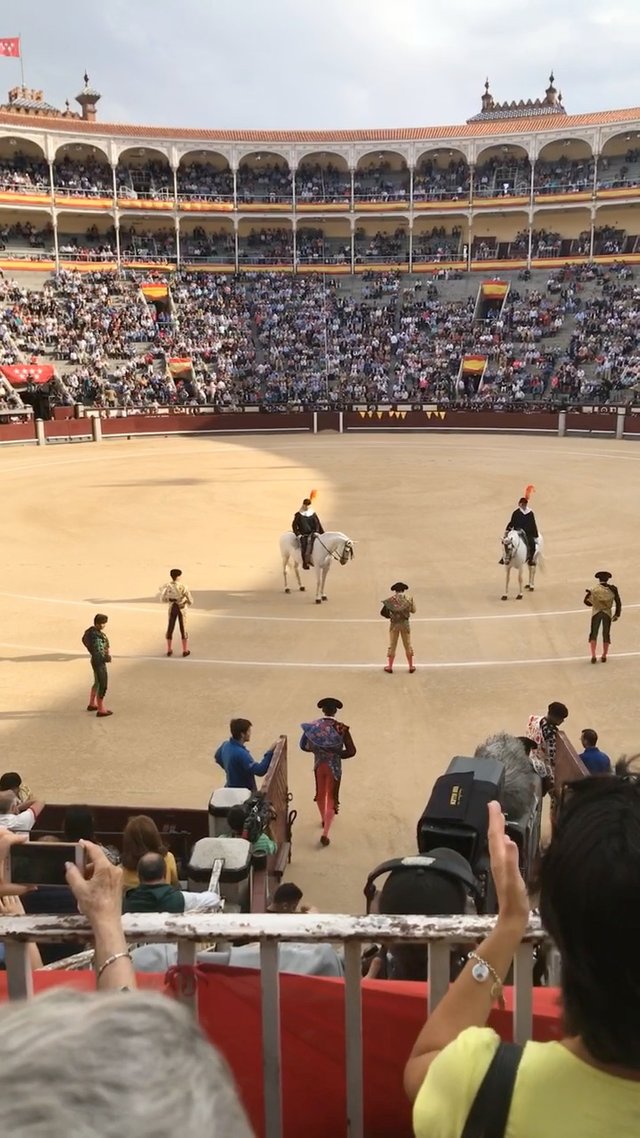
The Spectacle of the Bullfight in Madrid, Spain begins with a processional to the center of the ring. The Matadors and their Cuadrillas, their cache of assistants, are immaculately dressed in colorful, sequined uniforms. The Traje de Luces, or suit of lights, are heavily sequined with shiny strands of gold and silver that reflect the hot, Spanish sun in a dazzling array of colors.
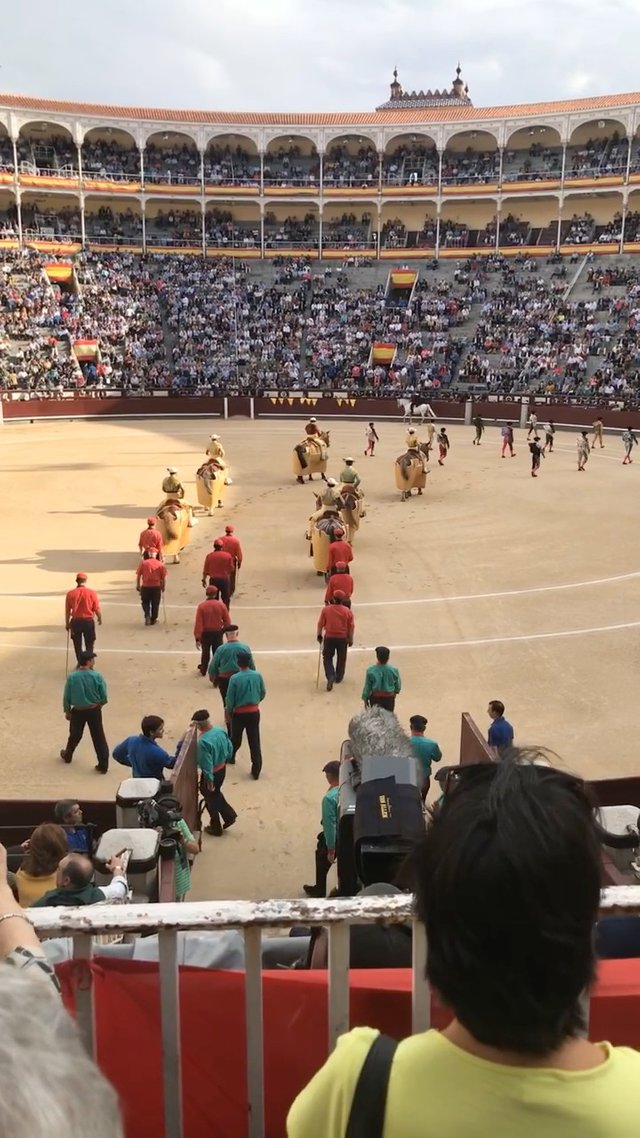
This parade, which the Spanish call the Paso Doble, finds its way to the ring's edge to face the Presidential box. And with a wave of a white handkerchief from above, the event begins.
The men march away behind the protective wooden ring, with the first Matador and his crew hiding behind burladeros - wooden barricades inside the circle. Then, the first bull is released from his pen. He races out into the middle of the ring, throws his horns into the air, and claims his territory. Eager for a fight he cannot win.
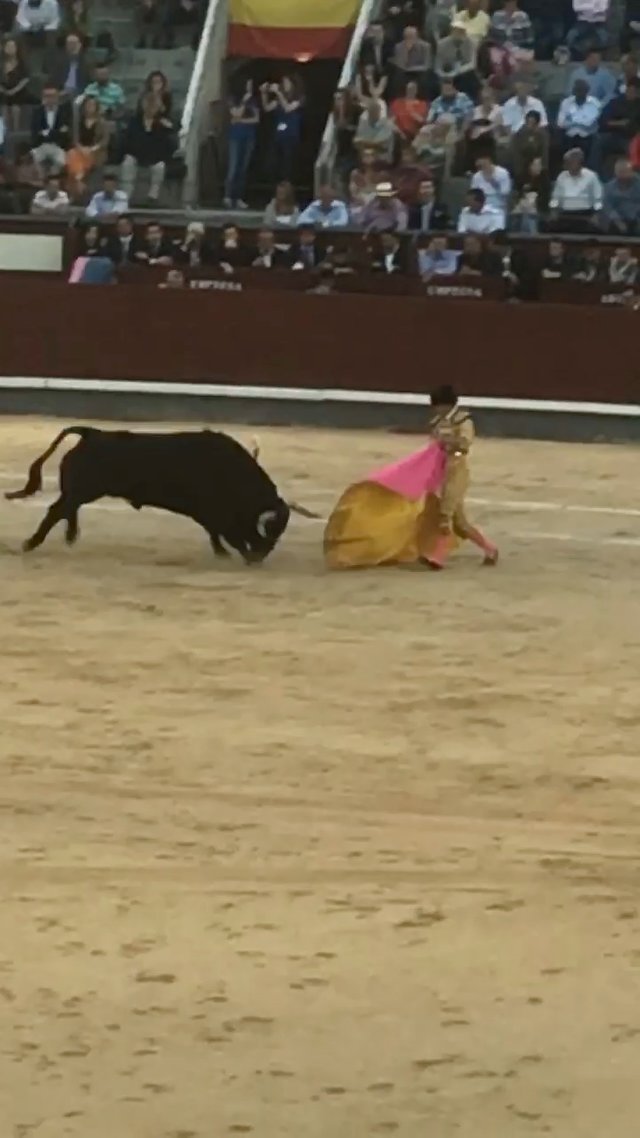
The first combatants to emerge are the Banderilleros, armed with naught but a pink cape called capotes.
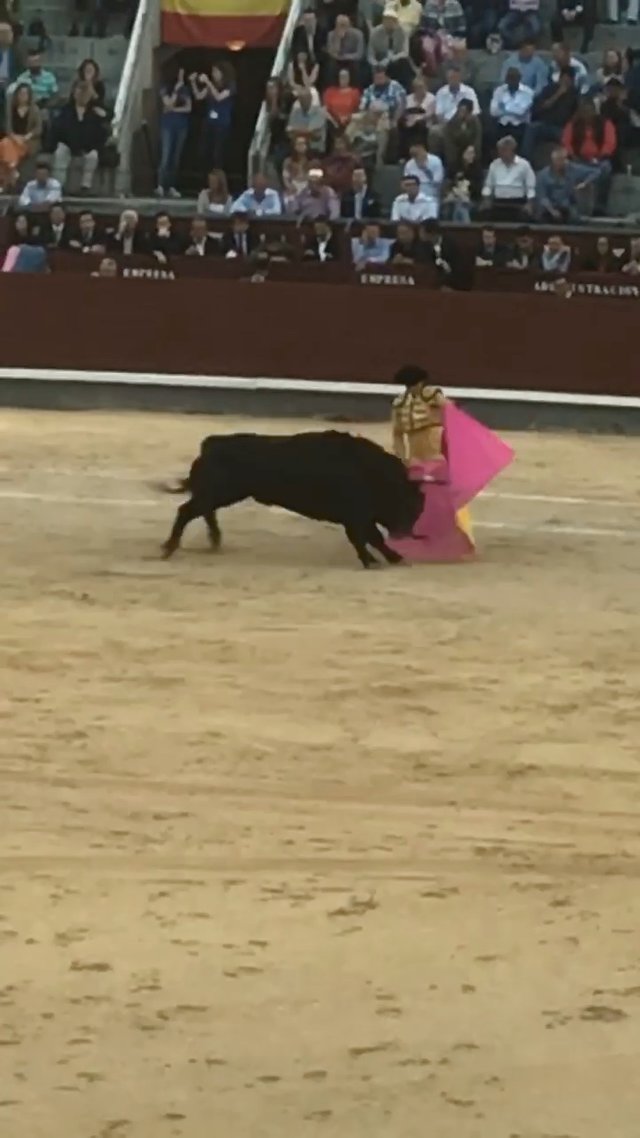
In this first of three tercios or thirds, the banderilleros entice the bull by approaching and waving their colorful capes. In this stage, the bull is evaluated.
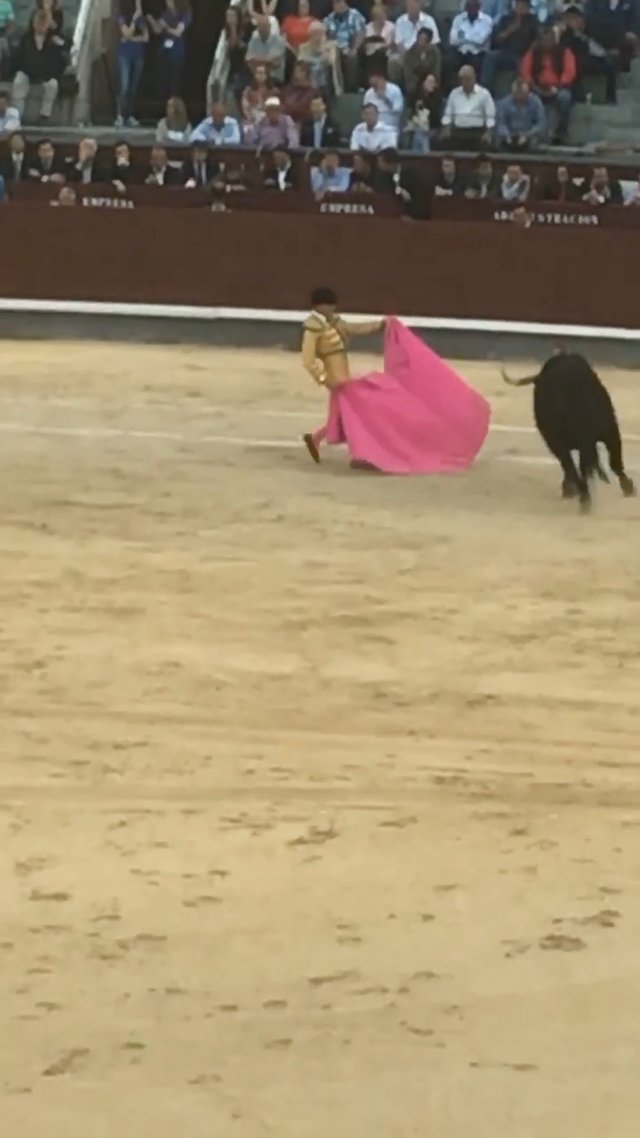
Observing from the safety of the burladeros, the Matador studies the bull to know his tendencies for movement, aggressiveness, and other behaviors.
Then, the Matador slips out into the ring and begins a series of simple passes of the bull. The goal of the Matador in making these intimate encounters is to display his bravery and poise. The closer the bull comes to the Matador, the better.
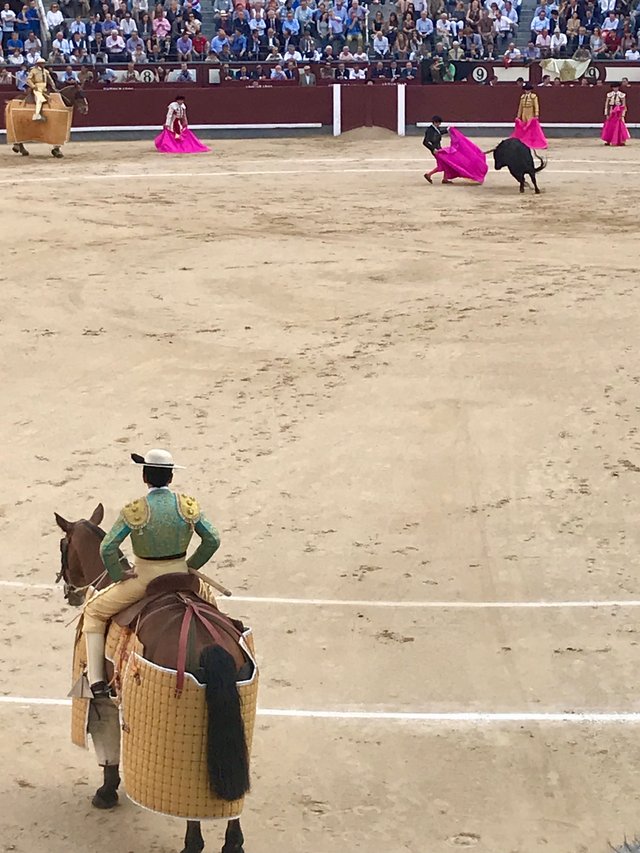
Next, with a flurry of trumpets, Picadors mounted atop heavily padded horses enter for their task. Riding up to the distracted bull on blindfolded horses, they drive their long, sharp lances, called vara, into the shoulder of the bull. The vara's purpose is to weaken the neck muscles so that the bull's head drops down. This drop of the bull's head makes the killing in Act III easier for the Matador.
The horses, amply padded to protect them against the bull's horns, are also blindfolded. Insulated against the bull's razor-sharp horns, they are sightless to the danger around them. Even so, I was still nervous for these marvelous animals as they were repeatedly rammed and pushed by the angry bulls.
Trumpets again. In the second act, the banderillos return to complete their next task. Charging at the bull on foot, they leap into the air, twisting sideways to avoid the beast as it passes. But not until they drive a pair of elaborately decorated picks into the shoulder of the bull. This process continues until the bulls are riddled with these flowery, pointed sticks -another attack on the creature's powerful nape.
Although most of the credit in a bullfight is assigned to the Matadors, I found the banderillos to be the most courageous and noteworthy. They are virtually unarmed, alone, and on foot; they leap straight at the bull with nothing but skill and fate to protect them.
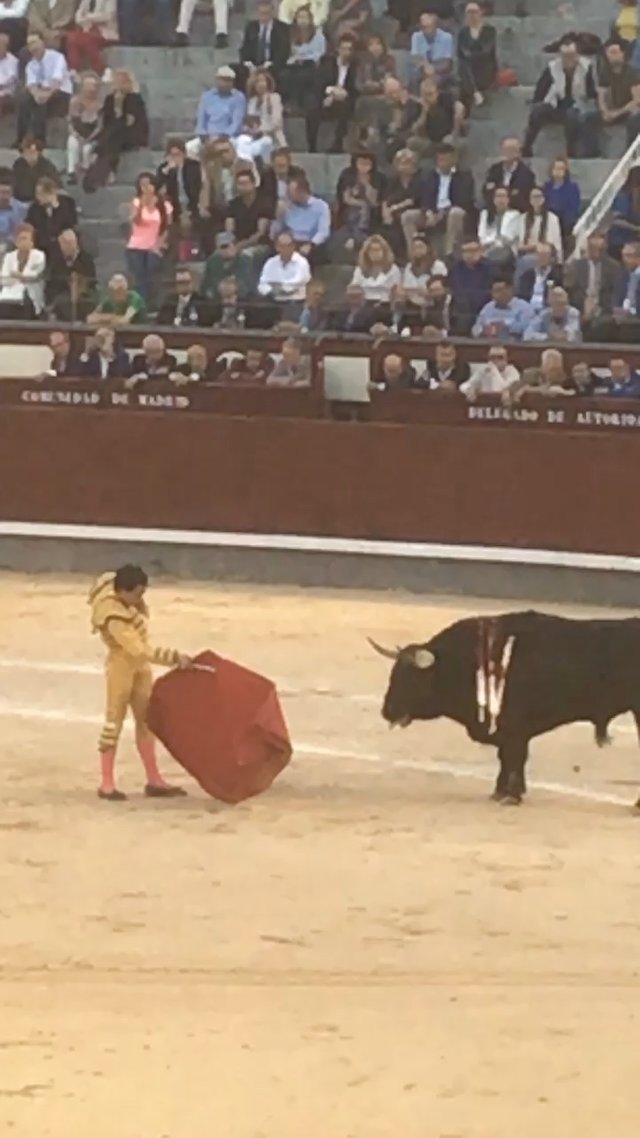
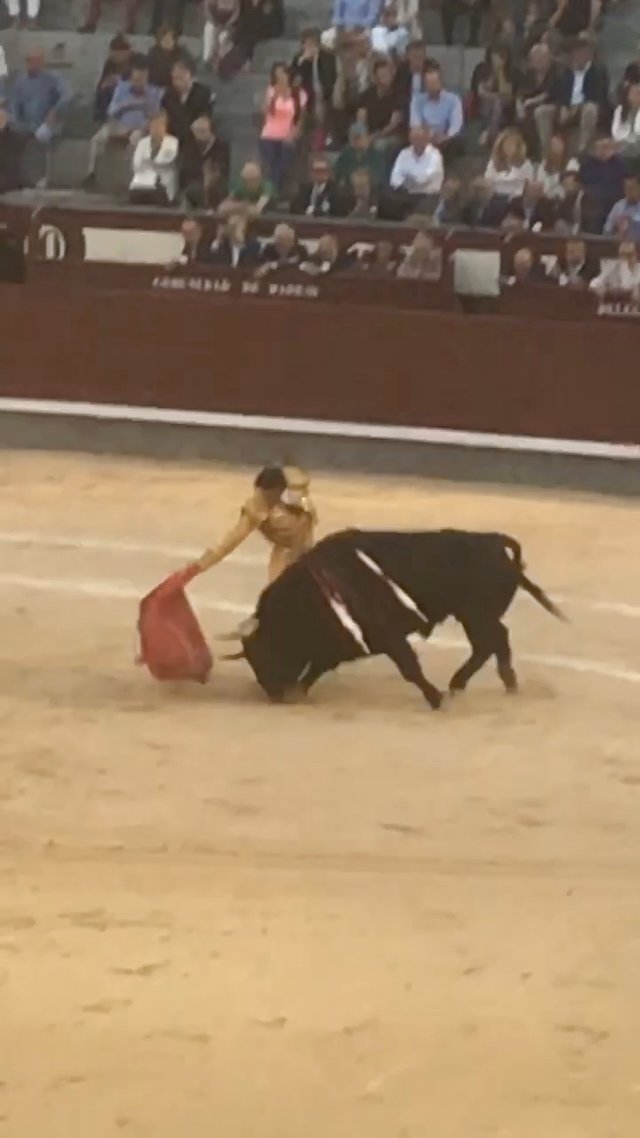
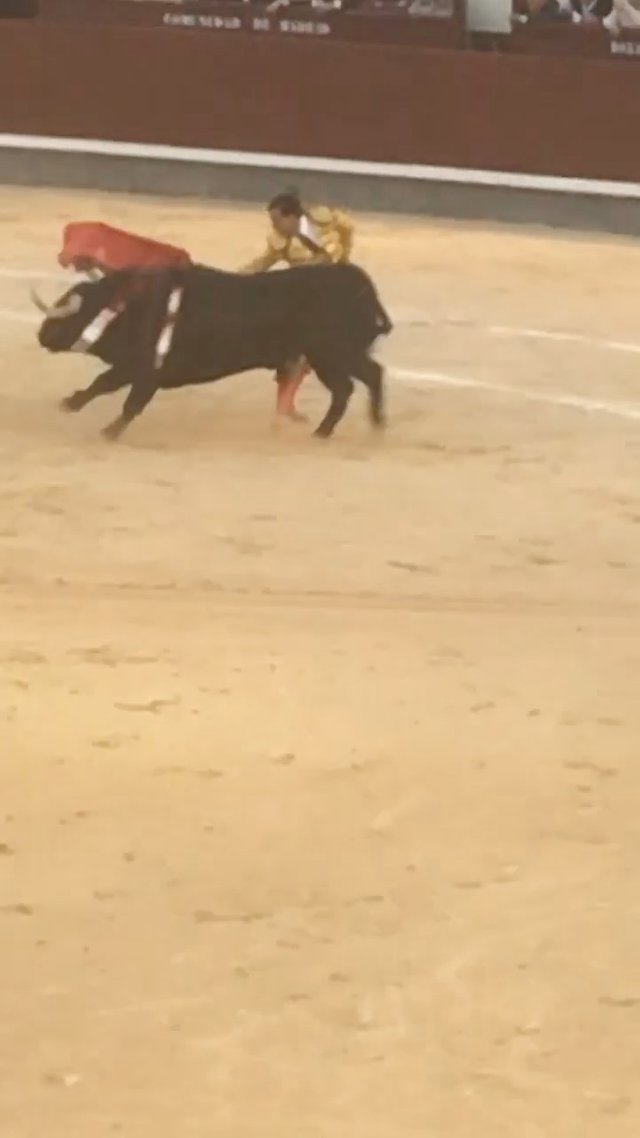
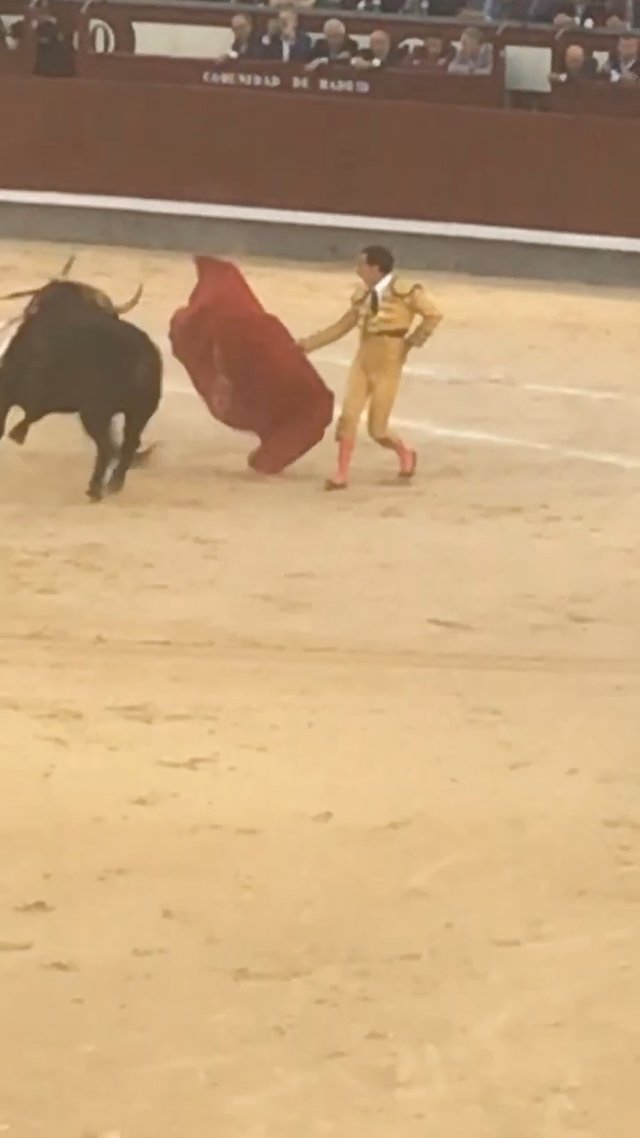
Now, with the bull weakened, head drooping, the Matador steps out solo to write the third scene of this drama. He makes a series of ever closer passes of the bull, faenas, twirling and with great flourish. It is now that the traditional red cape is used to lure in the bull, the muleta. And the muleta is wrapped around the final instrument to be used against el Toro, the sword.
After ten minutes of passes and a lot of grandstanding, the Matador raised his sword, ran at the bull, and hoisted the sword up over the bull's horns, driving the blade down into his neck just behind the head.
And the sword bounced off.
Regrouping, the Matador makes another pass, but with the same result. The crowd hoots and jeers. The bull huffs and wobbles. The sun, mayhaps disgusted, passes down over the rim of this bowl, leaving a star-filled, navy blue twilight overhead.
Finally, after several attempts, the sword finds the small hole between the shoulders and sinks in. Immediately, one of the cuadrillas advances on the dying beast and thrusts in his puntilla; a small knife meant to finish the animal quickly.
The Matador makes his victory lap of the ring and collects his accolades. His Cuadrillas prance about holding up their various instruments of death. The bull, however, is unceremoniously attached by ropes to horses who drag the carcass out of the bullring.
At the end of the three bullfights, a final processional occurs, with all three Matadors, and their Cuadrillas, once again march together through the bullring. This time, out of the arena to the applause and adoration of the capacity crowd. Hands on hips, proud and serious, another successful brush with death has occurred on their battlefield.
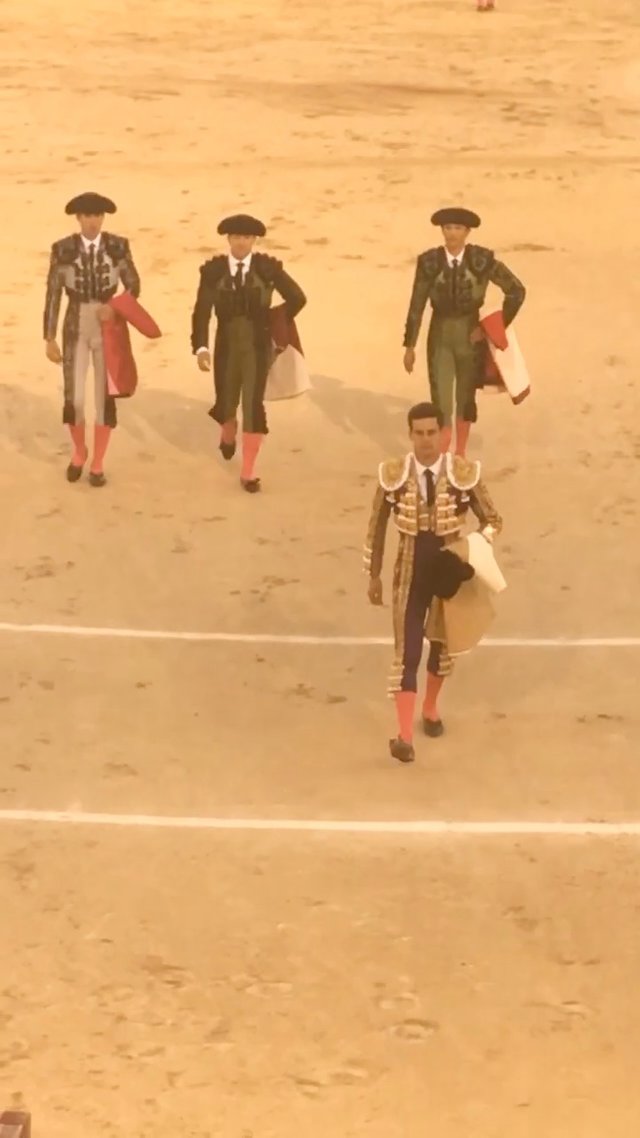
The good news? The bull is slaughtered immediately with the meat given to the poor. The bad news? The bull is... call it what you will: Defeated? Tortured to death? It's your call.
In all honesty, I try very hard not to make value judgments on bullfighting in Spain. And while I just had to see it - it is so central to Spanish history, if not their culture - I can't say I enjoyed the fate of the bulls. Would I go again now that I've witnessed this that they call 'the Spectacle?'
I'm not sure.
I found many aspects of the bullfights disturbing and an assault on my values. And yet? Bullfighting is considered an art form with a rich tradition and a deep cultural heritage that is hard to ignore or impugn lightly. That is why I had to attend despite the controversy. Despite my conscience.
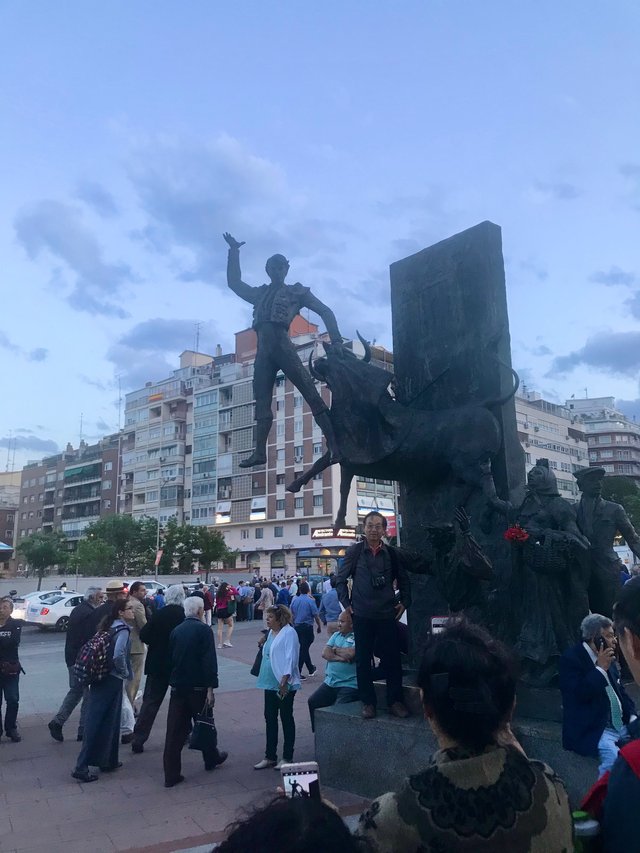
Ernest Hemingway wrote this on the topic: "Bullfighting is the only art in which the artist is in danger of death and in which the degree of brilliance in the performance is left to the fighter's honor."
Whether honor or bloodsport, bullfighting in Spain is surely both art and cruelty as closely intertwined as Matador and el Toro.
Olé!
All photos taken by the author with iPhone 7.
Source Materials:
las-ventas.com
comunidad.madrid
britannica.com
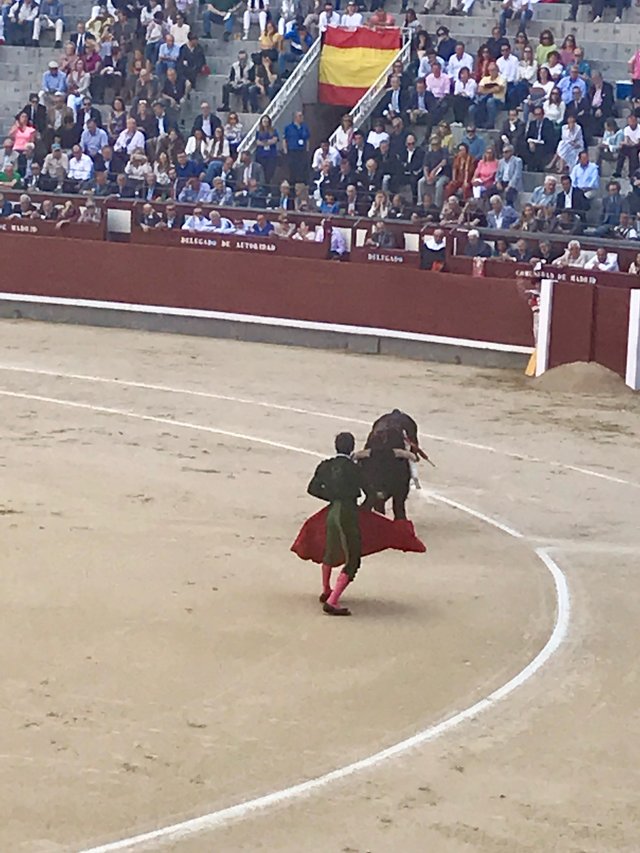
Congratulations @braveboat! You received the biggest smile and some love from TravelFeed! Keep up the amazing blog. 😍 Your post was also chosen as top pick of the day and is now featured on the TravelFeed.io front page.
Thanks for using TravelFeed!
@for91days (TravelFeed team)
PS: You can now search for your travels on-the-go with our Android App. Download it on Google Play
Share your playlist with others. Sharing it with friends or on social media can help spread the mp3 relaxing vibes and allow others to enjoy the calming effects of your curation.